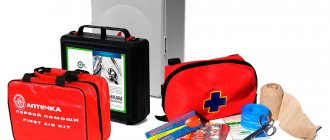Matches are made from a wooden stick (straw) with a head that ignites when rubbed against a spread (grater). This grater is applied to the sides of the matchbox.
Aspen is used as a raw material for making match straws, and less often - linden. To do this, a strip of veneer is removed in a spiral from a round block of bark, cleared of bark, using a special knife, which is then laid in layers and chopped into matchsticks.
When burning a match, it is necessary, firstly, to obtain an unsmoldering ember from the straw, and secondly, to keep the hot slag from the burnt head on it in order to protect the consumer from burns to clothing if hot slag gets on it. In addition, the smoldering ember from the straw naturally poses a fire hazard. To prevent the straw from smoldering and to fix the slag from the head on it, the straw is impregnated with substances that form a film on its surface when burned. Thanks to this film, the combustion of coal stops. The same film secures the slag from the head. Phosphoric acid and its salt, diammonium phosphate (NH 4) 2 HPO 4, are used as anti-smoldering substances
To ensure the transition of the flame from the head to the straw, the latter near the head is impregnated with molten paraffin. Matches with non-waxed straws go out almost immediately after the head burns out. Paraffin, on the other hand, ignites easily when the head burns and produces a bright flame.
Today we have useful advice addressed to people who like to wander through nature with a gun (hunting season, its opening, is just around the corner) or go fishing. Of course, they don’t give up their hobby even in winter. Some people like winter fishing even more than summer fishing. But it seems to me that there are still more “heat-loving” fishermen. As you know, nature is very changeable, and fishermen and hunters need to always be prepared for any unforeseen situations, especially if you are somewhere far from “civilization.” Here are hunting matches, this is exactly the “arsenal” that you need to arm yourself with when going out into nature. After all, ordinary matches and lighters are very unreliable during long stays in nature. And such matches can help you out in various situations.
How to do it and what will be needed for this?
And you can make such matches very easily and you don’t need any super materials for this. There are no problems with ordinary matches, except for them you also need ammonium nitrate, you will need nitro varnish to cover the matches, and the well-known silver oxide (it is needed in the form of powder).
The first thing we will do is mix dry ammonium nitrate with ammonium nitrate. We will mix these compositions 1:1. When you mix these two components well, add nitro varnish to them and then mix the entire contents again. You will need to achieve a dough-like state of this mixture.
- When you get this consistency, roll out this “inedible” dough into a thin layer and cut it into narrow strips. The width of such stripes should be a very small millimeter or two.
- Next we will need regular matches. We take one of them and spirally wind on it those narrow strips that we have already cut out. You need to start winding from the middle of the sulfur head down and finish doing this in the middle of the match itself. So, we wrap each match (that is, based on the number of prepared strips) and then let them dry.
- When the matches have dried well, you will need to coat them with nitro varnish. You can cover it with a regular brush, which children use when painting. BUT, the sulfur head of the match SHOULD NOT be coated with this varnish!
Otherwise, you will simply have problems lighting matches. Some people think that it is much easier to dip the entire match directly into nitro varnish, but again this should not be done, otherwise the head of the match will also be covered with varnish and you will no longer be able to avoid problems with ignition. - That's it, your hunting matches are completely ready! So you can now safely use them to make a fire, and you can even use not the driest firewood. Such homemade matches can burn successfully even in water, and the wind will not be able to extinguish the flame of such matches.
But in this video they will show you everything well and tell you again. Try it and you will succeed.
We know about ancient methods of kindling fire mainly from history and descriptions of travelers who observed them in the camps of the so-called backward tribes. We ourselves have long ago become accustomed to using matches. It should be noted that in recent years, lighters and automatic ignition on gas stoves have been added to them. However, matches have not lost their relevance to this day. But how much do we know about them? How often do people look closely at such familiar, everyday things?
Types of matches
The matches themselves have hundreds of varieties. They are distinguished from each other by composition, by the principle of combustion, by color and even by size. For example, there are several types of matches that differ from each other in the type of ignition:
- non-scratch - easily ignite when rubbed on any surface;
- grating matches are the most common matches that can only be lit by friction against a special surface called a “grater.”
The most popular types of matches are:
- storm - can burn in any situation, even in strong winds and in water;
- thermal - they emit a lot of heat, such matches can even be used for soldering;
- signal - these matches emit colored flames;
- fireplace - from the name it is immediately clear that they are used to light a fireplace;
- photographic - help create instant flashes.
Matches are different
Even the simplest, “homemade” matches are designed quite cleverly. The main secret is in their heads, which satisfy two almost opposite requirements: the tip of the match should not fall off the stick when ignited, crumble during storage, and the stick should go out almost instantly when it burns out a little.
Even more difficult are the tasks that hunting matches must perform. They are required to burn much longer, they must produce a large and hot flame, and they are supposed to light in both wind and rain. As a result, hunting matches below the head are coated with an additional compound and can burn for 10 to 20 seconds - just what you need when you light a fire in “non-flying” conditions. Covering the head with a special film prevents it from getting wet. So a quality product can light up even in the rain.
Storm matches are even more “weather-resistant”: their coating also contains naphthalene and starch, so even a force 12 wind is not an obstacle to their ignition.
For those who do not often use such incendiary sticks, we note: it is undesirable to use them in an apartment (house) - their flame is too large, and they smoke with a pungent and unpleasant odor.
Match head composition
Currently, there are many recipes for incendiary masses. However, in any match the composition of the head always includes the following groups of substances:
- oxidizers - provide oxygen that fuels the combustion process (bichromite or potassium chlorate, Berthol's salt, pyrolusite, etc.);
- flammable components - a variety of substances can be used (sulfur, organic adhesives of plant and animal origin, phosphorus compounds);
- dyes - give the head a certain color;
- fillers - prevent rapid combustion (iron oxide, crushed glass);
- acidity stabilizers - prevent the occurrence of adverse chemical reactions (calcium carbonate, zinc oxide, etc.);
- adhesives - hold all components together and at the same time have flammable properties.
Some components interact closely with each other, performing several functions at once. Thus, pyrolusite not only serves as a source of oxygen, but also catalyzes the decomposition of Berthol salt, and iron oxide prevents explosive combustion and at the same time gives the head a characteristic color (rust).
Thus, to say that the key component of a match is sulfur or phosphorus is completely incorrect. The presence of a flammable substance that can ignite due to friction will not in itself provide the desired effect. Igniting the head and spreading the fire to the base of the straw is a whole chain of physical and chemical processes.
The composition of matches also depends on their type. Thus, some are capable of igniting on any surface that provides sufficient friction, while others can only ignite when interacting with the appropriate lubricant applied to the box. In the latter case, we are talking about so-called safety matches, the heads of which do not contain the primary igniter, which is phosphorus sulfide. This component is present only in the grating mass.
The most famous way
Hunting matches can be purchased at any specialized store for fishermen and hunters. However, if there is no such thing near your home, and you are too lazy to go look for it, then you can handle it yourself. Most often, do-it-yourself hunting matches are made from ordinary ones with additional substances: silver, nitro varnish and ammonium nitrate. Silver is mixed with saltpeter in equal quantities, and varnish is added to them. Everything is kneaded like dough until it begins to resemble dough. The resulting “plasticine” is rolled out thinly (preferably with a glass bottle, which you don’t mind throwing away afterwards). The pancake is cut into the narrowest strips possible, no wider than a couple of millimeters, or better yet, even narrower. These ribbons are wound spirally around the match, from the head to the middle of the stick. Almost finished hunting matches are left to dry, after which the wound strips are painted with varnish. Do not varnish the head under any circumstances - the match will not light without sulfur. Of course, the work is painstaking, almost like jewelry, but at the dacha, on a hike or fishing you will not be left without a fire.
What is the composition of the match?
A match consists of a wooden base (straw) and a head. To make its wooden base, which is called “straw,” aspen or linden is used. Logs are cut into logs, peeled of bark, and then a 2.1 mm thick veneer is cut in a spiral using a special knife, which is then chopped into matches. Ignition stripes are applied to the matchbox - graters.
Browse products for inventors. Link to the store.
In order to prevent the smoldering of the coal from the straw and to secure the slag on the head so that it does not fly off during combustion and burn through clothing or, even worse, do not get on the body, the match is impregnated with anti-smoldering substances. When a match burns, these substances create a protective film on it. Such a substance is phosphoric acid and its salt – diammonium phosphate (NH4)2HPO4.
To improve the burning of the straw, it is impregnated with a small amount of paraffin.
You can do it differently
Less known is another way to make a hunting match. Instead of the above components, cotton threads and paraffin are suitable. The threads are tightly wound around household matches, preferably in more than one layer. The head, of course, remains open. The paraffin is melted and the workpieces are dipped into it. It’s easier to just throw matches at it and then catch it; but, in order not to wait for the excess “wax” to drip off, it is better to take each one with tweezers and dip it into the melt.
But no matter what method you use to make hunting matches, do not forget to take care of dry “cherkach” (or “chirkalka” - call it what you want). Without it, the most waterproof matches will not light. The simplest method is to keep it in a tightly tied condom.
Will be useful during the holidays too!
Craftsmen believe that such a hunting device is appropriate not only in field conditions. If you add a few small iron filings to the composition used to process matches in the first manufacturing option, then during combustion you can observe a beautiful sparkling fireworks display similar to the one given. In bad weather, you don’t want to cancel the holiday, and not everyone works in damp conditions. So you can please your children with safe homemade products.
Hunting matches are suitable for use even in the worst climatic conditions. The burning time of one match is on average 20 seconds, during which time you can easily light a fire even with damp small twigs. Matches are not afraid of either wind or moisture. Buy Hunting matches and give yourself the opportunity not to be nervous about the fact that the matches are constantly going out due to the wind. We offer matches from the well-known company Kedr Plus; many are already familiar with their products and use only these matches.
Characteristics
0 reviews for the product Hunting Matches
Delivery
Dear buyer! Our online store Tocamp's delivery service operates seven days a week. And we are glad that you chose our store. We will deliver the goods within 1-3 business days from the moment the order is placed. Our managers will be happy to provide you with more detailed information about delivery time.
The minimum order amount is 500 rubles.
Delivery in Moscow
The cost of delivery in Moscow within the Moscow Ring Road is 350 rubles.
When ordering an amount over 10,000 rubles and weighing less than 10 kilograms, delivery will be free, within the Moscow Ring Road
If the order value is less than 1000 rubles, the delivery cost is 500 rubles.
Delivery across Russia
If you need to deliver goods to other cities in Russia, then there are several options.
1. You place an order, We confirm the availability of the product you have chosen, you make an advance payment from 20% to 100% of the order value, using a Sberbank BLITZ transfer, transfer to our Sberbank card or other agreed method and we send the product you have chosen after receiving the funds Russian Post or EMS Russian Post. Upon receipt of your order, you will only have to pay the cost of postage, which you can calculate on the Russian Post website. Our company guarantees that after receiving money for postage and the ordered product, we will send it to you within 1-3 days. Our company guarantees that all ordered goods will be properly packaged to ensure their integrity and safety. If we are unable to send you the ordered product, we undertake to send you the money back as soon as possible.
Oversized parcels are sent only after prepayment!
You can track your parcel on the Russian Post website.
2. Delivery of goods by the transport company is subject to 100% prepayment.
Delivery to the Russian Post and to the transport company costs 200 rubles.
Delivery to the Moscow region
The delivery cost is calculated according to the scheme 350 rubles + 30 rubles. per kilometer.
Remember that the time spent coming to us can be much more expensive than the cost of delivery.
Pickup available. For pickup, you must make an order through the website, where you indicate the required product, after which our manager will contact you and confirm the pickup time. The pick-up point is located at: Moscow, Pyatnitskoe highway 24 from 1
Once upon a time, hunting matches were a necessary element of equipment for hunters, tourists and fishermen, and helped them make a fire in extreme conditions.
Today, in view of the fact that there is a huge selection of means for lighting a fire, from lighters to lighters, it would seem that there is no particular need to carry these matches on an extreme trip.
We decided to figure out whether this is really true or not. Let's figure it out.
Let's look at the main ways you can light a fire in the field, with the exception of exotic methods such as friction and metal wool.
Gas and petrol lighters
The advantage of the lighter is obvious
- burns in almost any conditions,
- she is not afraid of getting wet,
- she has a supply of gas that will last for a long time,
- Cons: It’s difficult to light it in severe frost, you’ll have to heat it up somehow, and after it gets wet, you need to dry the lighter somewhere, namely the flint.
Gasoline lighters have similar characteristics and are in some ways superior to gas lighters, for example
- burns well in the wind,
- trouble-free operation in severe frost,
- the main disadvantage is the need to carry gasoline,
- minus the high price for high-quality copies, due to the non-tightness of the structure, gasoline constantly evaporates from it.
Flint
an excellent alternative to other methods of starting a fire,
- requires skill and dry kindling,
- strongly depends on ambient humidity and wind strength.
- It is not afraid of getting wet, just wipe it and dry it a little and you can knock out a spark.
- minus - you need to solve problems with tinder, skill is required.
Regular matches
Simple and cheap, they work in any frost.
- when wet they become unsuitable for use,
- need chirkash,
- difficulty of use in strong winds,
- limited quantity,
- may spill into pockets or backpack.
As it turns out, there are quite a lot of methods for starting a fire in the field, the simplest and most convenient is to take an ordinary lighter, or better yet several, scattering them in your pockets and backpack, and in most situations the problem with the fire will be solved.
This is true, but up to a certain point. Let's move on to hunting matches.
Match head chemistry
The chemistry of the match head has gone through interesting stages of development. It all started when striking sparks when a stone hit a piece of FeS2 pyrite and igniting charred pieces of wood or plant fibers with them was practically the only way for humans to produce fire.
The first matches based on chemical reactions began to be made at the end of the 18th century. At first, these were wood splinters, on the tip of which potassium chlorate (Berthollet salt KClO3) and sulfur were fixed in the form of a head. The head of the match was immersed in sulfuric acid, a flash occurred and the splinter caught fire.
The most important stage in the development of chemistry on the way to modern matches was the introduction of white phosphorus into the composition of the match head (1833). Such matches were easily lit by friction against a rough surface. However, when burned, they created an unpleasant odor and, most importantly, their production was very harmful to workers. White phosphorus vapors led to a severe disease - phosphorus necrosis of bones.
In 1847, it was found that white phosphorus, when heated in a closed vessel without air access, turns into another modification - red phosphorus. It is much less volatile and practically non-toxic. Soon the white phosphorus in match heads was replaced with red. Such matches were lit only by friction against a special surface made of red phosphorus, glue and other substances.
There are several varieties of modern matches. According to their intended purpose, they distinguish between matches that light under normal conditions, moisture-resistant (designed to ignite after storage in damp conditions), wind matches (lighted in the wind), etc.
When burning a match, for safety reasons, it is necessary to obtain a non-smoldering ember from the straw and keep the hot slag from the burnt head on it. To eliminate the smoldering of the straw and secure the slag from the head, the straw is impregnated with substances that form a film on its surface during combustion. Thanks to this film, the combustion of coal stops. It also secures the slag from the match head. Phosphoric acid and its salt (NH4)2HPO4 are used as anti-smoldering substances.
To ensure efficient flame transfer from the head to the straw, the latter near the head is impregnated with molten paraffin. Paraffin ignites easily when the head burns and produces a bright flame, which is important when using a match as a light source. In addition, it is safe for storing matches and does not emit soot, smoke or harmful gases when burning.
Over a period of more than 150 years, the chemistry of the match head has a large number of formulations of incendiary masses. They are complex multicomponent systems. They include: oxidizing agents (KClO3, K2Cr2O7, MnO2), which provide the oxygen necessary for combustion; flammable substances (sulfur, animal and vegetable glues, phosphorus sulfide P4S3); fillers - substances that prevent the explosive nature of combustion of the head (crushed glass, Fe2O3); adhesives (glues), which are also flammable; acidity stabilizers (ZnO, CaCO3, etc.); substances that color the match mass in a certain color (organic and inorganic dyes).
The combustion temperature of match heads reaches 1500 0C, and their ignition temperature lies in the range of 180–200 0C.
Phosphorus (grating) mass is also multicomponent. It is applied to the narrow side outer sides of the matchbox. The composition of the most common grating mass includes: red phosphorus, antimony sulfide (3) Sb2S3, lead iron Fe2O3, pyrolusite MnO2, chalk CaCO3, glue.
It should be noted that the reaction that occurs when a match head burns is one of the most violent and dangerous chemical processes. Therefore, handling matches requires respect.
Hunting matches
In essence, these are ordinary matches, but unlike ordinary ones, they are coated with a solution of bertholite salt, thanks to which they can burn in any conditions, even under water or in a strong storm. The burning time of these matches is about 10 seconds. The main purpose of these matches is the ability to use them in unusual situations or extreme conditions, for example, turning over in a kayak or falling through the ice in cold water.
Unfortunately, if you are lucky enough to get ashore after this, the danger to life does not disappear, the problem remains of how not to die from hypothermia or hypothermia, because the equipment will most likely be sunk or become wet and it will not be possible to quickly change clothes.
Your hands will tremble from the cold and it will most likely be simply impossible to light a fire with ordinary matches, a lighter or a flint, and in addition to this, according to the law of meanness, a strong icy wind will definitely rise.
Actually, in such situations, hunting matches will help save your life, but on one condition if they were hidden in the equipment that will remain on you in this situation. So the question is whether hunting matches are needed or not, they are definitely needed, but they must be included in the emergency equipment kit and kept with the person at all times, otherwise they will be of no use.
In normal situations, it is enough to use a regular lighter, regular matches or for amateurs.
How and where to store hunting matches
Since hunting matches are a necessary element of survival and may be needed in an emergency, they need to be stored on the body in an emergency kit.
The main requirements for an emergency kit are to be miniature and inconspicuous, so a sealed container hanging around your neck or fastened to your trousers, or lying in your trouser pocket is perfect. Alternatively, you can use either ready-made matches already packed in sealed packaging, for example as in the photo: Or order, for example











